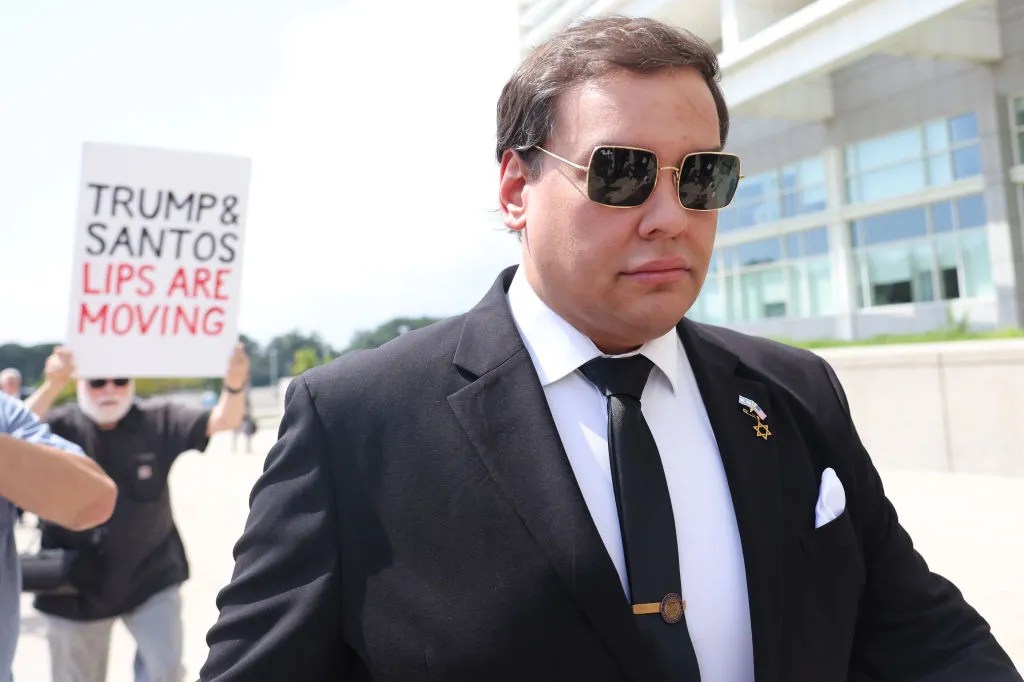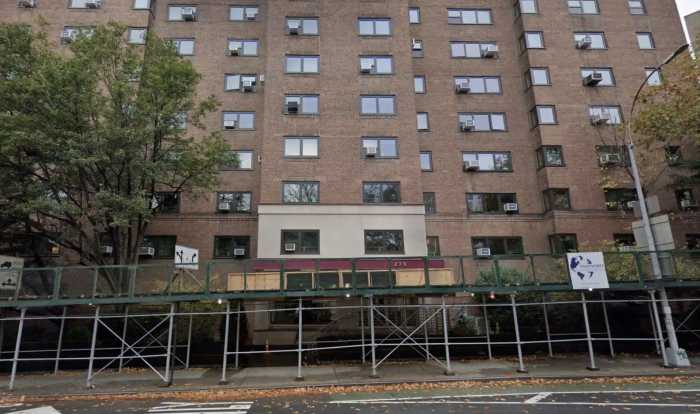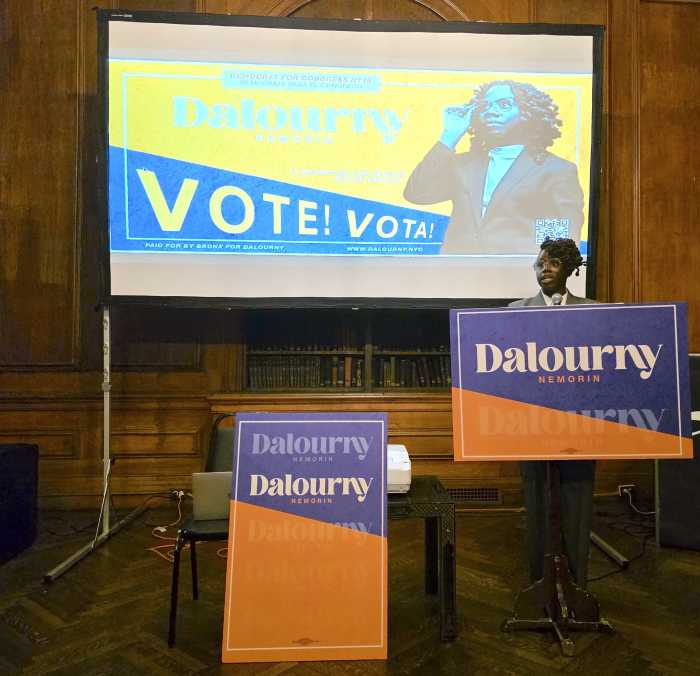In battle with Gov. Pataki, downtown cultural leaders decry threat of art center censorship
The downtown arts community has rallied behind the Drawing Center in recent weeks as it struggles to hold its ground in the plans for a new cultural center at the World Trade Center site.
The 28-year-old arts organization has found itself at the center of a controversy led by a coalition of family members of September 11 victims over what sort of art—if any—should accompany a memorial to the fallen towers. Critics of plans for a cultural center charge that art has no place so close to the memorial and criticize the Drawing Center in Soho, in particular, for recent art exhibits that satirized Bush administration policies in the war on terror and in Iraq.
One illustration at a Drawing Center exhibit featured a hooded figure holding a barbed-wire chain spelling out the word liberty, in a clear allusion to the Abu Ghraib prison scandal, titled “A Glimpse of What Life in a Free Country Can Be Like.” Another, titled “Homeland Security,” showed four planes swooping out of the sky aimed at a naked woman with her legs spread open.
The Drawing Center is being considered as a tenant in the proposed cultural center.
In response to a front-page banner headline about the exhibition, Gov. George Pataki called for “an absolute guarantee” from the arts organizations that they will have “total respect for the sanctity of the site.”
Although the International Freedom Center, which is being developed as part of the cultural center, pledged to “highlight America’s role as a beacon for freedom,” the Drawing Center has refused to bow to censorship, a move that has many in the arts community cheering from the sidelines.
“The 9/11 victims are incredibly important, but I don’t think people should be dictating who gets that space,” said Holly Block, executive director Art in General, a non-profit visual art space on Walker St.
Block, who lives on Maiden Lane downtown, said she has watched her neighborhood morph into a mecca for rubberneckers since the disaster. A cultural institution would bode well for tourists.
“People should have the ability to see the richness of New York City and that includes the Drawing Center,” she said.
Block and several of her art world colleagues have written letters and submitted op-ed columns to newspapers across the city in support of the Drawing Center.
“The first thing we did was call the Drawing Center and ask them how we could help,” she said.
The Drawing Center has received numerous e-mails and letters in support of their cause from around the country since the story first surfaced in late June.
Based on Wooster Street, the Drawing Center has been a New York City institution since 1977. The only non-profit organization in the country to focus on the exhibition of drawings, the Soho organization is viewed by many people in the arts community as one of the most vital components of the revitalization process.
“The Drawing Center is like a jewel in the art world. Their shows are always thoughtful. It would be a dream to have them down here,” said Cheryl Pelavin, owner of Cheryl Pelavin Fine Arts on Jay Street in Tribeca.
The prospect of losing the Drawing Center, she added is “heartbreaking.”
Downtown Manhattan has been struggling to draw businesses back to the neighborhood since 9/11 and as the area becomes increasingly residential, the lack of cultural institutions south of Canal Street becomes evermore apparent. Nearly 80 percent of downtown residents cited cultural institutions as their number one priority for the area, according to a Wall Street Rising poll conducted 18 months ago.
“It would be really sad to lose another reason to go down there,” said Tracy Williams, owner of the eponymous Greenwich Village art gallery. Williams recently moved out of Tribeca.
Although the governor has given the Drawing Center an ultimatum, the organization has yet to officially respond, saying only that discussions with the Lower Manhattan Development Corporation (LMDC), which oversees the Trade Center site, are promising.
“All options are on the table,” said Fraser Seitel, a spokesman for the Drawing Center.
The LMDC says it is still trying to accommodate the organization.
“Among the topics under discussion are locations both on and off the site for some or all of their programming,” Joanna Rose, LMDC spokeswoman, wrote in an e-mail response to questions.
The Drawing Center continues to insist that it will not restrict its content under any circumstances.
“The people at the LMDC understand that an art institution depends on freedom of expression,” Seitel said.
Many in the arts community worry that if the Drawing Center ultimately bows out of the new Trade Center master plan, there will be no one to fill the space.
“Me and my colleagues in the art world here in New York—having seen what a hot topic this is—would be leery of getting mixed in with that, which is too bad because it’s a great opportunity,” said Mark Vevle, a spokesman at the Lower Manhattan Cultural Center.
Some wonder if the highly politicized and scrutinized site is the best place for a serious art institution known for showcasing provocative and engaging art.
“You’re opening yourself up to being criticized by the city, people, the government, and it might not be worth the headache,” said Rick Davidman, director of DFN Gallery on Franklin Street in Tribeca, adding that a more traditional institution, like the New York Historical Society, one of the 15 finalists in the bid for the site, might have been a better choice.
For some in the downtown arts community, the growing storm surrounding the Drawing Center is deeply unsettling.
“We’ve totally lost contact with what it is to be human,” said Pelavin. “Of course there’s bad art, but there are bad books and bad newspaper articles. We’re all just human. Art is kind of a reflection of the culture. It’s just made by other people in the culture. What could be better than to have culture down here? This is a place where people live.”
Olga Mantilla contributed reporting for this article.
gaycitynews.com




































